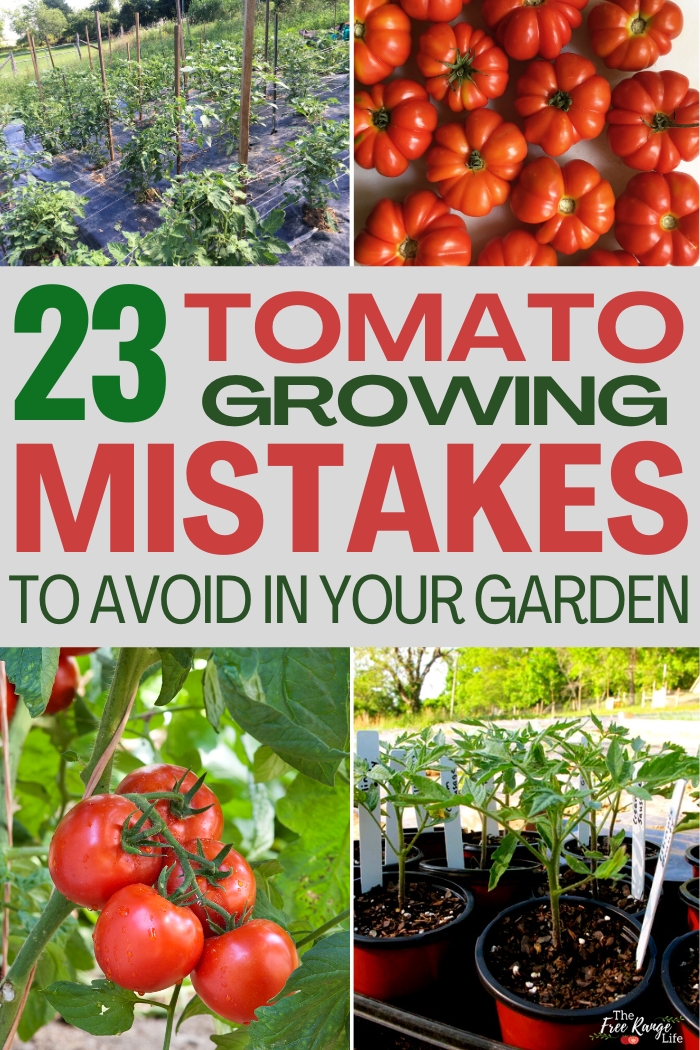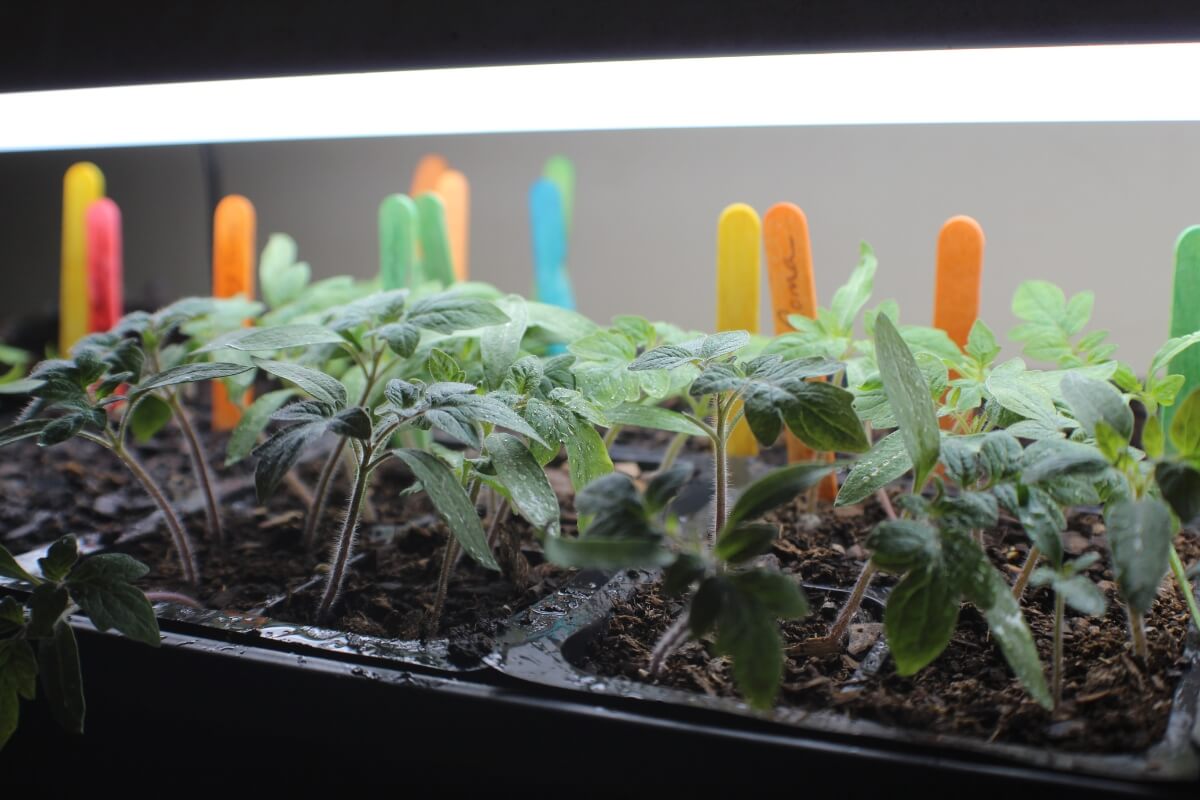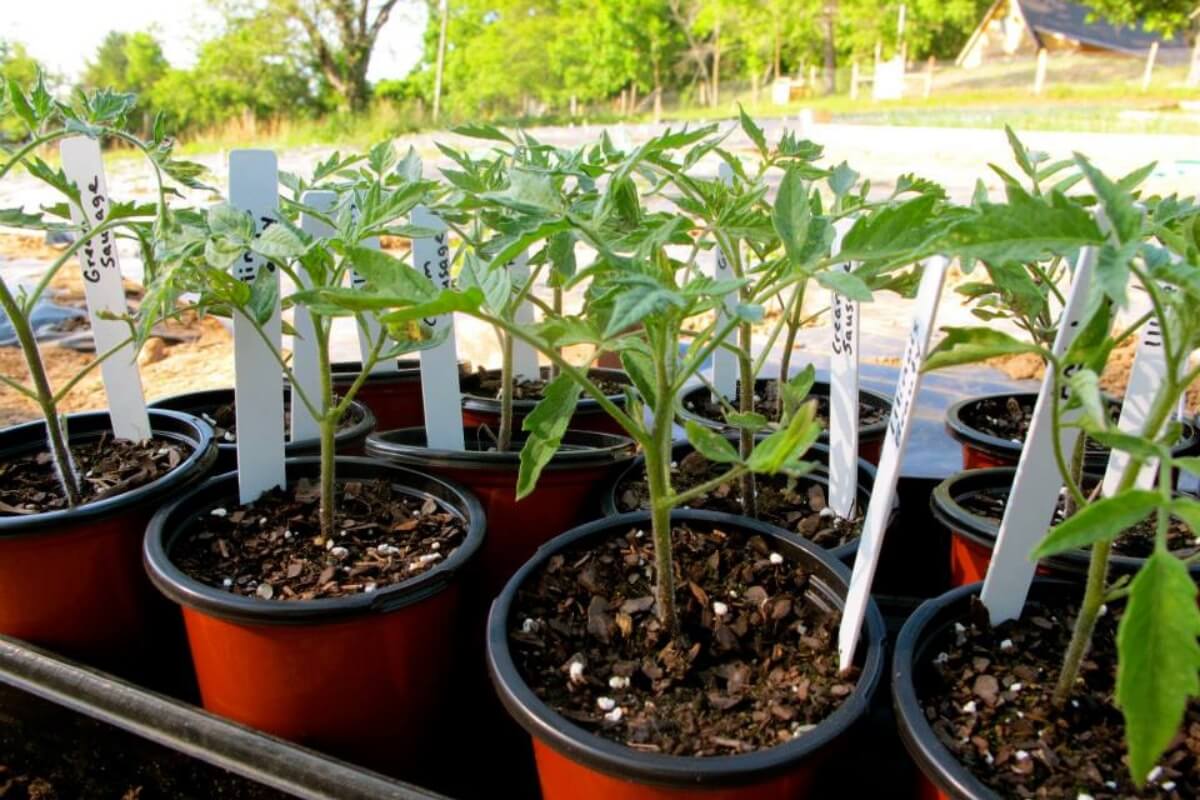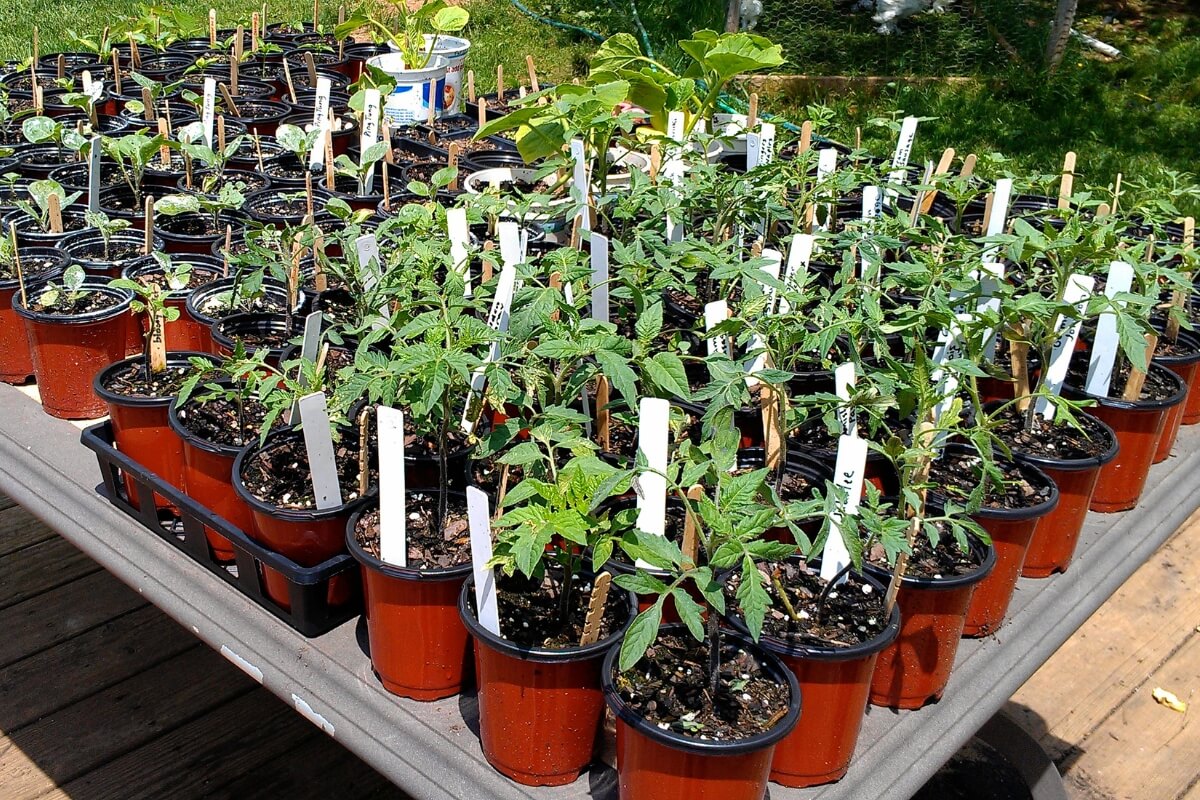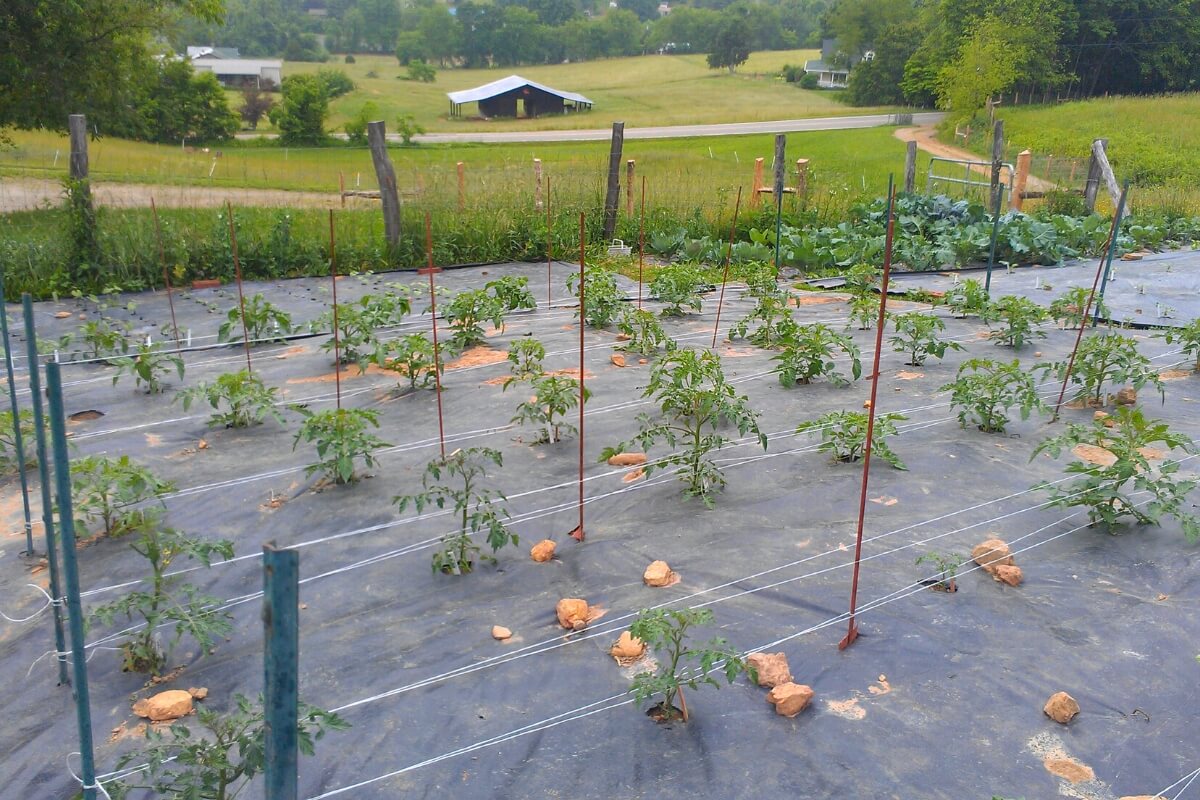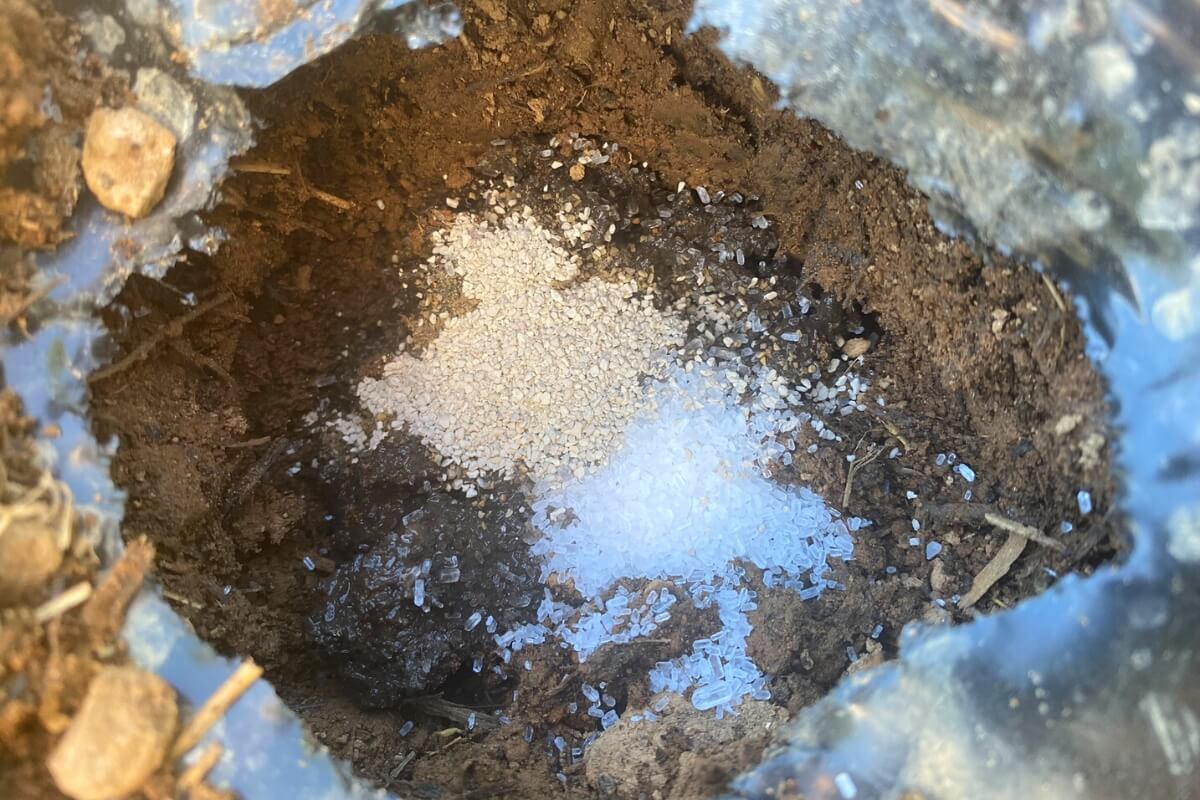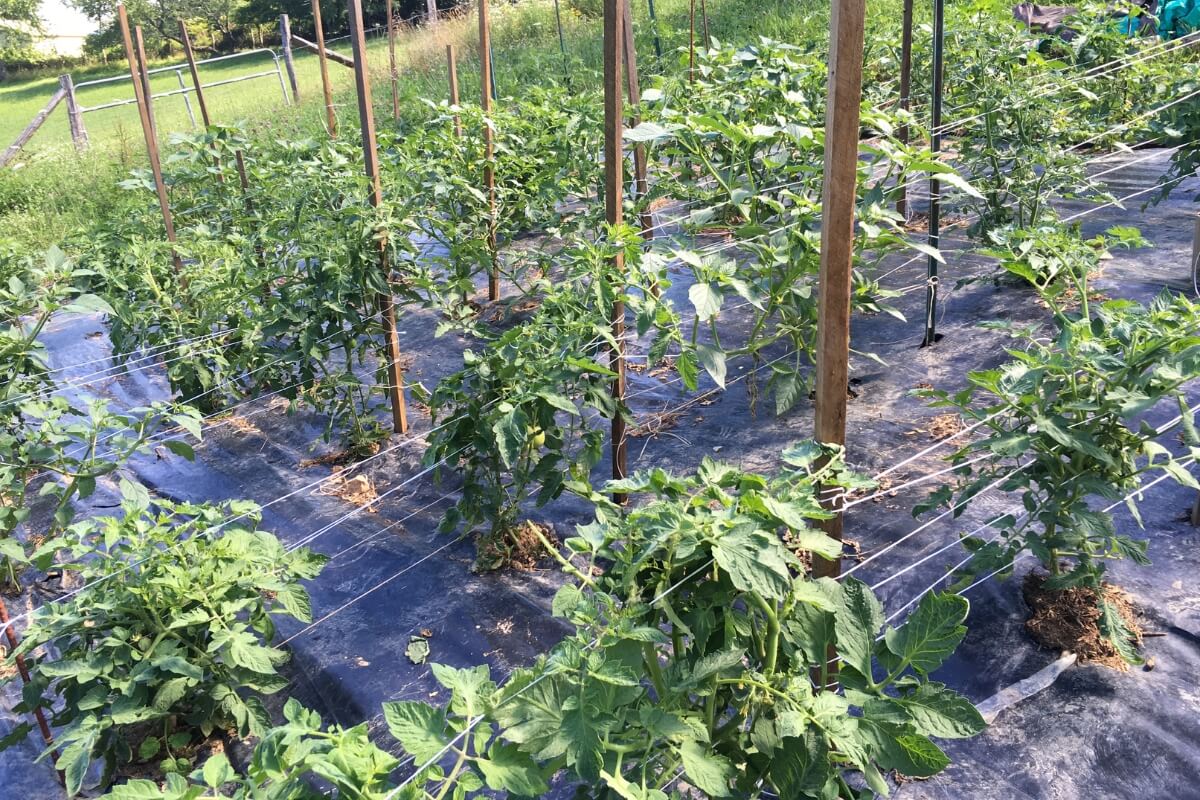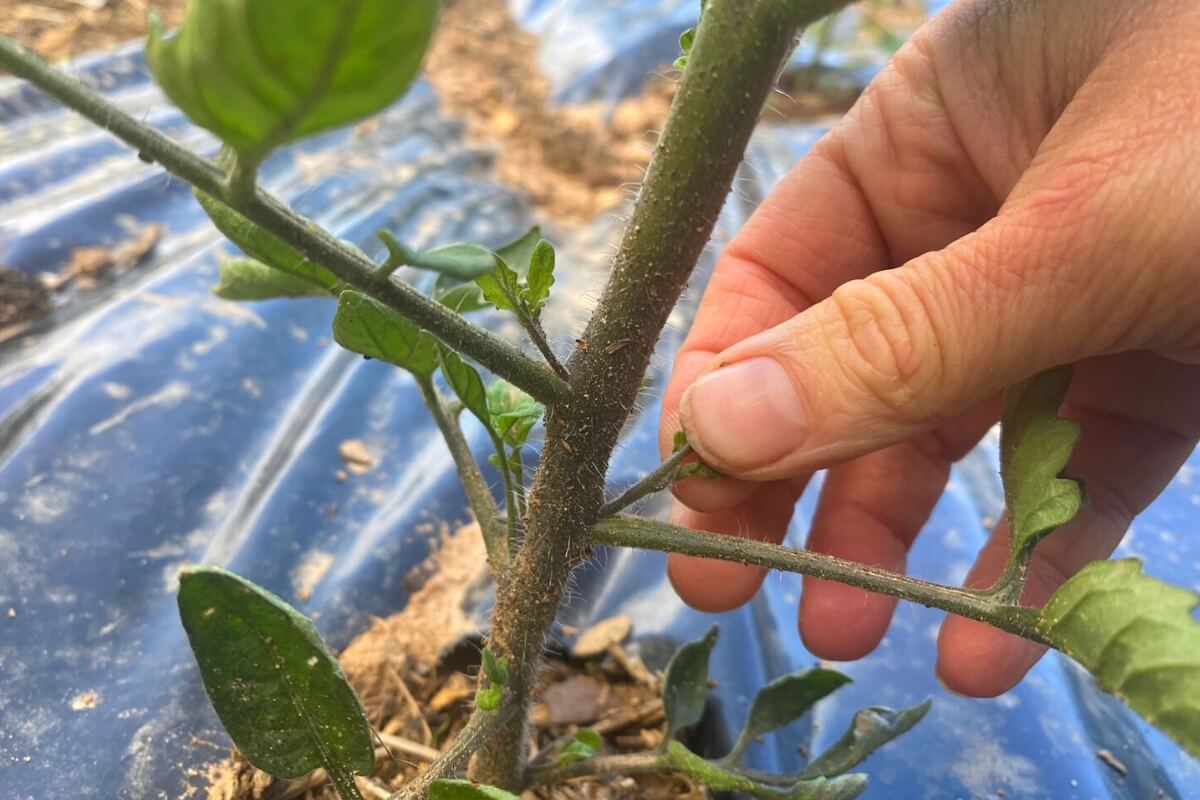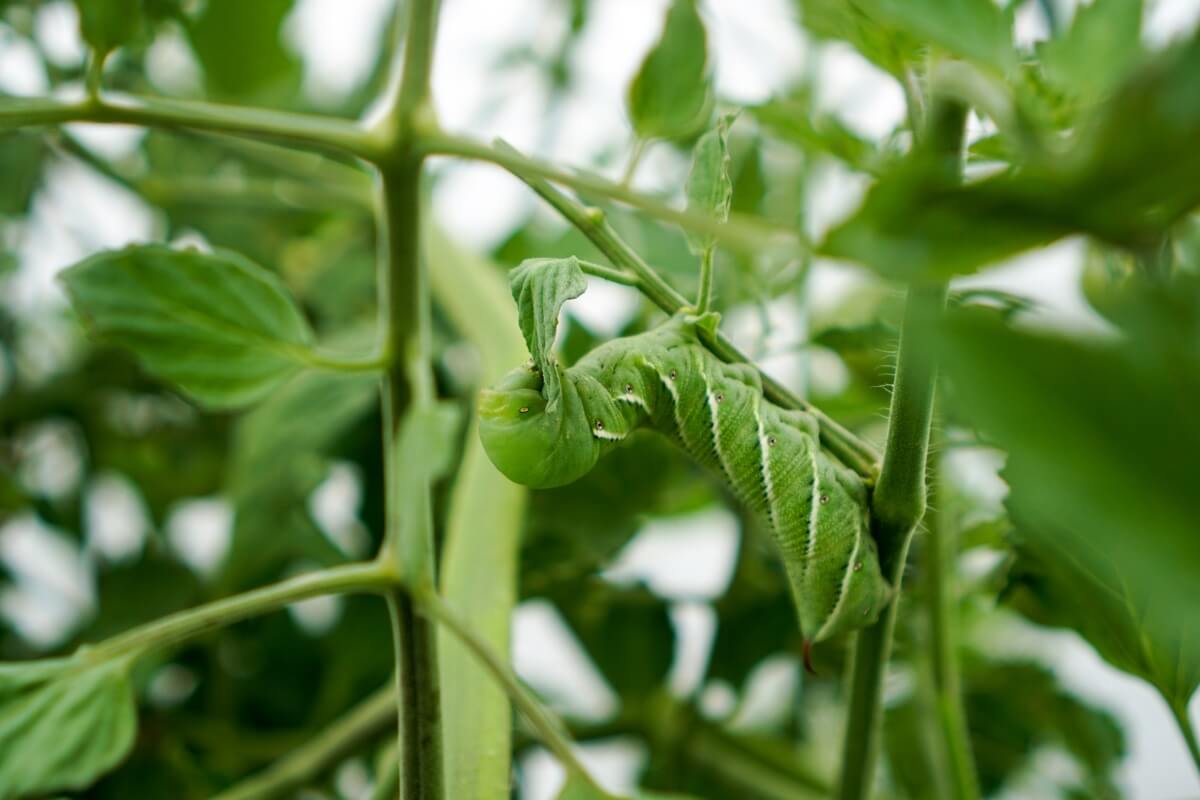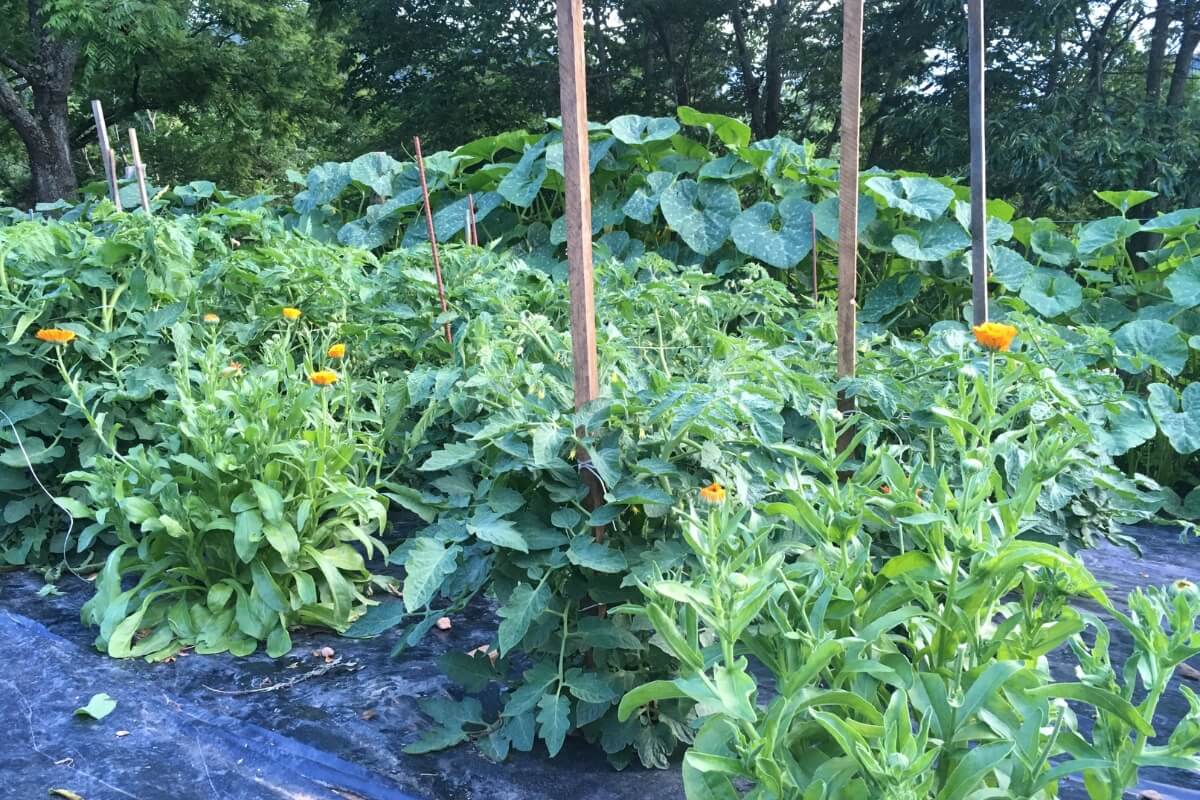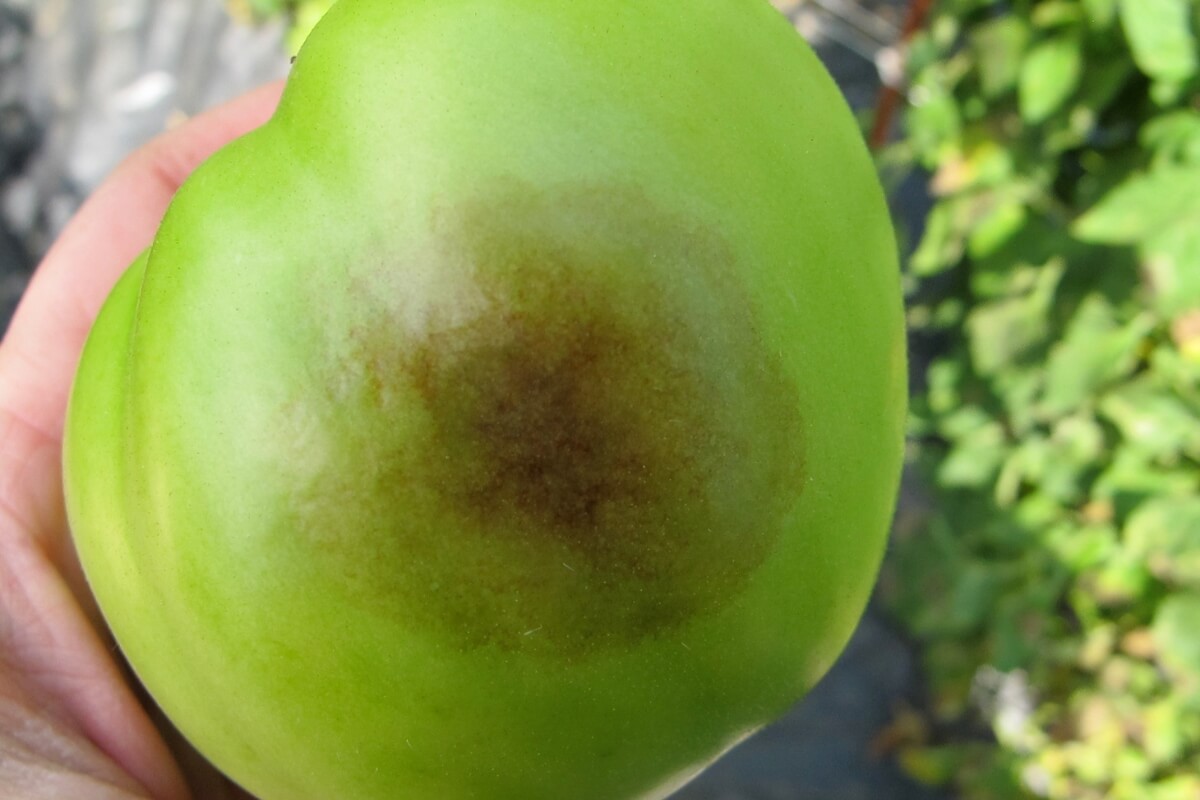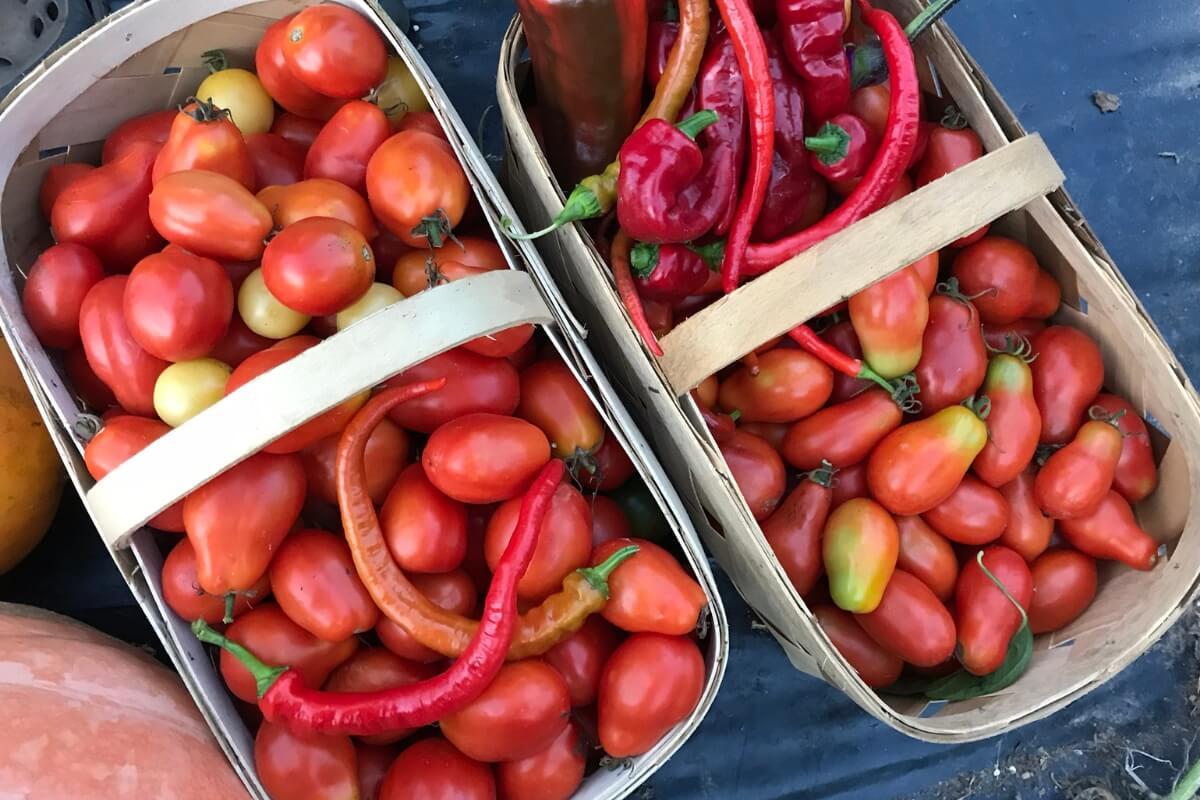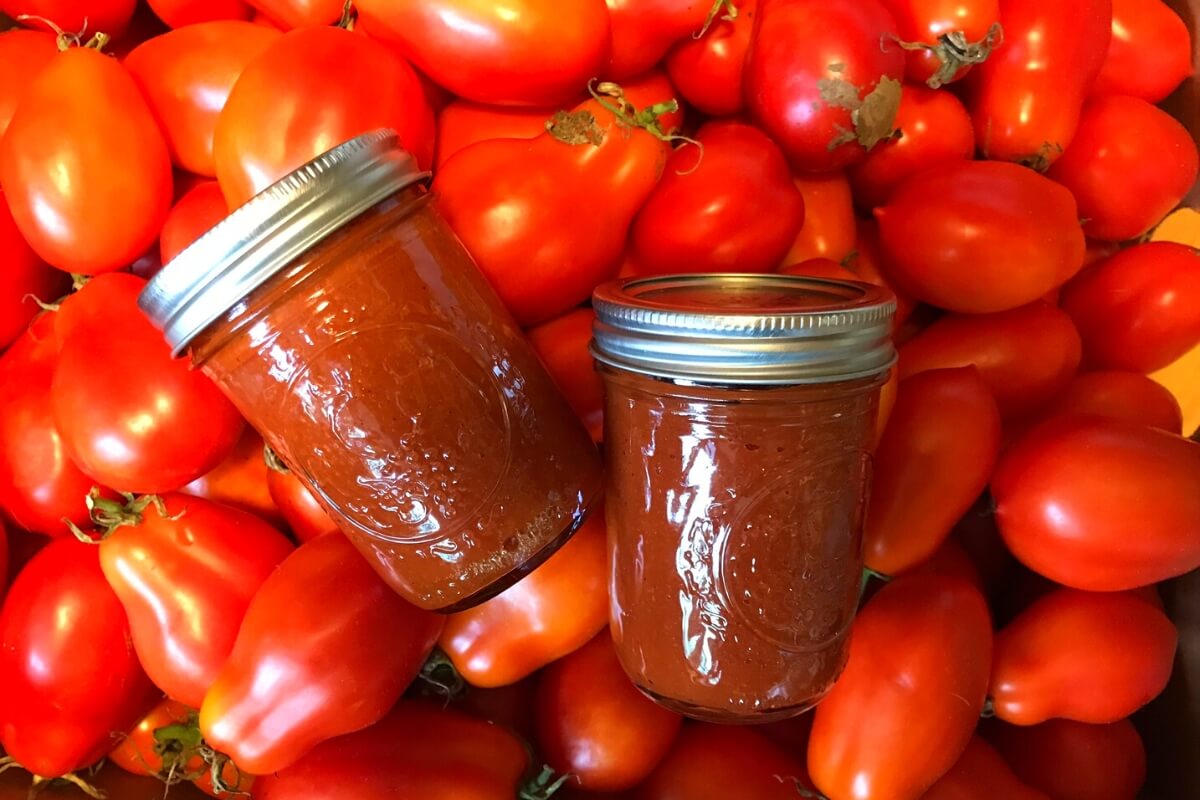Are you having trouble growing tomatoes? Learn about the most common tomato growing mistakes made by new (and seasoned!) gardeners.
Growing tomatoes can be a rewarding and delicious experience, but it’s not without challenges. There is also a learning curve when it comes to growing tomatoes in your backyard garden.
This site contains affiliate links. If you make a purchase using one of these links, I may earn a commission. Please see my disclosure page for more information about cookies collected and our privacy policy.
I’ve been growing tomatoes for decades, and I still have trouble sometimes (usually due to weather!) but over the years I’ve learn what to do, and what not to do. In this article, I’ll share 23 common mistakes made by gardeners when growing tomatoes, along with valuable tips to help you avoid them.
Let’s dive in and ensure you have a bountiful tomato harvest!
23 Tomato Growing Mistakes You Might Be Making
Tomatoes are my favorite vegetable to grow. And I am not alone. Countless gardeners across the world grow tomatoes- I’d even venture to say that every gardener grows tomatoes.
But if it’s your first year growing tomatoes- or your first attempt didn’t go so well, maybe it’s time to see if you’re making any of these tomato growing mistakes?
If you’re brand new, why not check out my guide on How to Grow Tomatoes, first?
Not Choosing the Correct Tomato Type
Not all tomatoes are created equal. There are different types that have different growing needs and different uses.
First let’s talk about the 2 ways tomatoes grow:
- Determinate: A determinate tomato is a type of tomato plant that grows to a certain height and then stops growing. It produces all of its fruit at once, usually over a period of a few weeks.
Determinate tomatoes are often used for canning and freezing, as they are easy to harvest all at once. They are also a good choice for small gardens, as they do not take up a lot of space.
- Indeterminate: Indeterminate tomatoes are a type of tomato plant that continues to grow and produce fruit throughout the growing season. They can grow to as tall as they can- depending on their support system and if you pinch out the growing tip.
Indeterminate tomatoes are a good choice for gardeners who have a lot of space and are willing to put in the extra effort to care for them. They are also a good choice for gardeners who want to have a continuous supply of tomatoes throughout the growing season.
Now, let’s talk about the different types of tomatoes:
- Paste: Also called plum tomatoes, these tomatoes have thick fruit walls and smaller seed cavities. They have a lower moisture content and are less seedy. Usually used for making sauce or salsa.
- Cherry/Grape: These are small, juicy fruits that grow in clusters. Usually used for fresh eating and snacking, but also for drying.
- Slicing: Larger, round tomatoes that are perfect for slicing and placing on a sandwich or burger. They have thinner walls and more seeds.
When choosing a tomato type to grow, take into account not only how much space and time you have to devote to growing tomatoes but also what you plan to do with your harvest.
Not Choosing the Correct Tomato Varieties
Take things one step farther and also make sure you are planting the correct tomato variety for your needs.
There are a million different varieties of tomatoes out there, from heirloom to hybrids, and there are differences between them.
For example, if you live in a cool climate with a short growing season, be sure to choose a tomato variety that grows quickly and has less days to maturity.
Check out my list of Fast Growing Tomatoes for ideas on which to try.
If you live in an area that consistently has issues with diseases such as late blight, you may want to try a tomato variety that has been bred for some resistance to these diseases.
Take some time to read through seed catalogs to find what varieties will work best in your area and for your needs.
Starting Seeds to Late
If you start your tomato plants from seed, you need to plan ahead to ensure plenty of time to grow before harvest.
Tomato seeds should be started 8-10 weeks before your last frost date.
This gives them plenty of time to grow and mature and gives them the best start out in the garden.
Timing is also important if you live in an area with a short growing season- or an area that gets very hot. If you plant too late you might miss your window for a good harvest.
Failure to Pot Up Tomato Seedlings
Most of the time gardeners start tomato seedlings in small pots or peat pellets. While this is great for tiny seedlings and helps conserve space under grow lights or near windows, you will likely need to pot up your tomato seedlings at least once before planting them out in the garden.
- If you don’t pot up your tomatoes you could end up with lots of problems, such as:
- Root bound plants from living in a too-small pot for too long
- Tall leggy seedlings from overcrowding and competing for light and space.
- Stunted plants due to lack of nutrition.
Potting up also helps build a strong root system before planting out.
Not Hardening Off Tomato Seedlings
Hardening off is a step that should never be skipped.
It’s a necessary step for all plants, including tomatoes, that helps plants get used to the outdoor elements.
Inside, conditions are steady. But outside there’s hot sun, cold air, wind, rain, and a ton of other elements that can take their toll on a young tomato plant.
Check out my article on How to Harden Off Seedlings for more information on how to toughen up your tomato plants before transplanting them out in the garden.
Planting Tomatoes Too Early
Planting tomatoes too early in the season, before the danger of frost has passed, can lead to stunted growth or even the death of your plants.
Tomatoes are warm weather plants that are not frost hardy. Any amount of frost will kill your plants, and did you know you can get patchy frost when it’s above freezing?
Pay attention to your last frost date, but don’t jump the gun. In my area, our average last frost is April 30th. But I never plant tomatoes until at least May 15th because we’ve been known to have frosts as late as then.
Wait until the soil has warmed up and nighttime temperatures consistently stay above 50°F (10°C) before planting. And be sure to check the extended forecast before you plant make sure there are no cold snaps in the next 10 days or so.
Neglecting Soil Preparation:
Tomatoes are heavy feeders and failing to prepare the soil adequately is a common mistake made by new tomato growers.
Tomatoes thrive in well-draining soil enriched with organic matter. Before planting, amend your soil with compost or well-rotted manure to improve its fertility and structure.
Be sure not to over fertilize or use things that are considered “hot”. I’ve known gardeners who added lime to their garden before planting and ended up with chemical burns on their tomatoes!
Not Spacing Tomatoes Correctly
Giving your tomato plants enough space is crucial for proper air circulation and preventing the spread of diseases.
The correct spacing for tomato plants is 18-24 inches apart.
It can be hard to judge space accurately when planting out small seedlings, but remember that those seedlings will grow into large, bushy plants that need lots of space!
Not Adding Amendments to the Planting Hole
While not a mistake, per se, this is more of a lost opportunity.
At planting time you have the opportunity to give your plants a boost and give them the best chase at growing big and strong, with lots of fruit.
I always add a few handfuls of compost, some mycorrhizae fungi, and some epsom salt to my planting holes when I put in the tomatoes.
Not Planting Deeply
When you plant a tomato plant deeply, you are burying the stem below the soil line. This encourages the plant to produce new roots from the buried stem.
These new roots will help the plant to absorb more water and nutrients from the soil. They will also help the plant to anchor itself in the ground, which will help it to withstand wind and other elements.
Planting tomatoes deeply also helps the plant to produce more fruit. When the plant produces new roots from the buried stem, these roots will produce hormones that stimulate fruit production.
So, when planting out your tomatoes, be sure to dig the hole deeper and bury the plant. Pinch off or remove the lower branches or leaves and bury the stem so that the soil comes a few inches below the remaining leaves.
You can even plant the tomato seedling sideways, if your soil prevents deep holes.
Incorrectly Watering
Tomatoes need consistent moisture, but watering correctly is very important.
Overwatering can lead to root rot and other fungal diseases.
When you water, you should water deeply and only as much as needed, allowing the soil to dry out slightly between watering sessions. 1-2 inches a week is a good rule of thumb when it comes to watering tomatoes.
Remember that when tomatoes are developing fruit and flowers, regular watering (or rain!) is important. Not enough water can be just as detrimental to your tomato’s growth as overwatering.
Check out my article on How to Water Correctly for more information.
Watering from Overhead
To take watering even further, be sure that you only water tomatoes from the bottom.
Watering from overhead allows the leaves to get wet. This is a recipe for disease and fungal infection.
Watering from the soil level is the best way to prevent disease in your tomato garden.
Not Staking Your Tomatoes
Tomatoes need staking. Even determinate plants that sometimes say they don’t need support, still need some type of support.
Tomato plants grow tall, bushy, and heavy with fruit. They need support or the whole plant could snap and topple.
Inadequate support for your tomato plants can lead to sprawling vines and damaged fruits.
Depending on how many tomatoes you grow and what types you grow, support can be a simple tomato cage or something larger such as a fence.
I personally use the Florida Weave for most of my tomato plants. Read up on Ways to Stake Tomatoes, and pick one that works for you.
Failing to Prune or Remove Suckers
I hate to tell you, but tomatoes are not a plant it and forget it plant. They need care throughout the season to stay healthy and give maximum fruit production.
Pruning your tomato plants helps improve air circulation, reduce disease incidence, and channel energy into fruit production.
What does pruning mean when it comes to tomatoes?
It means to regularly remove suckers (the new growth that emerges from leaf axils). If you are growing determinate tomatoes, you don’t have to prune out all the suckers, but just enough to keep the plant manageable.
Pruning also means to remove any diseased or damaged foliage. I also remove some of the leaves once the fruits have been set to help them get more sun to ripen.
If you choose, you can also pinch out the main growing tip on indeterminate tomatoes once they reach the maximum height you want them to be.
Not Mulching (Letting Weeds Take Over)
Mulching helps conserve soil moisture, suppress weeds, and regulate soil temperature.
It also helps keep weeds away. Weeds steal nutrients from your tomatoes and can compete for space and sunlight.
I use black plastic as mulch for my garden, but wood chips, leaves, or straw can also work.
Inadequate Fertilization
Tomatoes are heavy feeders, and a lack of nutrients can result in poor growth and low fruit yield.
Tomatoes also have different nutritional needs based on their growing stage. For instance, as seedlings nitrogen is important to help grow strong stems and roots. But phosphorus and potassium become more important when the plant is flowering and fruiting.
Bone Meal is a good choice for tomatoes once they start flowering.
Ignoring Pest and Disease Management
As I mentioned, tomatoes aren’t a hands-off crop. They need regular checks and care as they grow throughout the season.
The best way to prevent pests and disease issues is to check daily and catch any problems early.
Look for signs of common tomato pests like aphids, hornworms, and whiteflies on your plants. Or signs of disease, such as yellowing leaves, spots, discolored fruits.
If you see signs of Late Blight, be sure to remove and destroy the plant ASAP.
Stay vigilant and implement organic pest control methods, such as handpicking, companion planting, or using insecticidal soaps to reduce pests.
Here are some of the Best Companion Plants for Tomatoes.
Planting Tomatoes in the Same Spot Year After Year
Continuous cropping in the same area can deplete the soil and increase the risk of disease buildup.
Rotate your tomato plants with other vegetable families to maintain soil health and minimize pest and disease issues in your garden.
Overcrowding the Garden
I already mentioned not planting tomatoes too close together, but also be aware of planting tomatoes too close to other vegetables as well.
Overcrowding in general can restrict airflow and increase the likelihood of diseases. Allow enough space for each plant to thrive.
Neglecting Regular Inspections
Regularly inspecting your tomato plants allows you to catch early signs of pests, diseases, or nutrient deficiencies. Prompt action can prevent further damage and save your crop.
I visit my garden daily (if not more) during the growing season. I walk through each bed and row and inspect the plants.
This gives me time to catch and remove pests, tie up tomatoes that need staking, remove damaged foliage, check for signs of nutrient deficiency, etc.
Preventing issues is always better than dealing with losing a crop due to my own neglect.
Failure to Remove Lower Foliage
Removing the lower leaves of your tomato plants helps improve airflow and reduce the risk of soil-borne diseases splashing onto the foliage.
Strip off the lower branches and leaves- especially those that are touching or in contact with the soil.
Failure Harvest in Time
If you’ve put in the time and effort into growing tomatoes, the last thing you want is for all that work to go to waste.
Tomatoes can ripen both on the vine and off, so sometimes it’s best to harvest just before peak ripeness to ensure they don’t go to waste.
Leaving them on the vine until you’re ready to use them can be a big mistake, since they can go from perfectly ripe to falling on the ground pretty fast.
Letting Your Harvest Go to Waste
And finally, after all that work, don’t let your tomatoes rot on your counter!
- There are plenty of ways to preserve and use tomatoes, such as:
- Roasted tomato sauce
- Ketchup
- Tomato Jam
- Salsa
Or any of these Ways to Preserve Tomatoes.
So there’s no excuse to let any go to waste- use them up!
When you’re a new gardener, it’s easy to make these tomato-growing mistakes.
Gardening is a learning process for all of us that requires trial and error- and even when you have years of experience under your belt, you will still be learning.
Avoid these tomato growing mistakes and you’ll help maximize your tomato plants’ potential and reduce the risk of any tomato growing problems!

